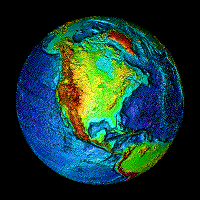El Niño Update [5 Oct 2009]
Posted by feww on October 6, 2009
ENSO Cycle: Recent Evolution, Current Status and Predictions
The following UPDATE is prepared by
Climate Prediction Center / NCEP – 5 Oct 2009
The latest weekly SST departures are:
- Niño 4 ~ 0.8ºC
- Niño 3.4 ~ 0.7ºC
- Niño 3 ~ 0.6ºC
- Niño 1+2 ~ -0.3ºC

El Niño Map. [SOURCE: NOAA/ Climate Prediction Center / NCEP]
Highlights
SST Departures (ºC) in the Tropical Pacific During the Last 4 Weeks
During the last 4-weeks, equatorial SSTs were at least1.0°C above average across parts of the central and eastern Pacific.
Global SST Departures (ºC)
During the last four weeks, equatorial SSTs were above-average in the Pacific and Indian Oceans. Also, above-average SSTs covered large areas of the Northern Hemisphere subtropics and mid-latitudes.
Weekly SST Departures (ºC) for the Last Four Weeks
- During the last four weeks, SST anomalies remained positive across the equatorial Pacific Ocean.
- During the last month, SST anomalies decreased over the eastern equatorial SST.
Sub-Surface Temperature Departures (ºC) in the Equatorial Pacific

Atmospheric Circulation over the North Pacific & North America During the Last 60 Days
During early August through September, an anomalous trough was prevalent in the North Pacific Ocean/Gulf of Alaska. During September, an anomalous ridge was present downstream, focused over Canada and the northern United States. The pattern also featured a weak trough over thecentral U.S., which contributed to cooling in the region, while the northern U.S. and Canada remained warmer-than-average.

The most recent ONI value (July –September 2009) is +0.8oC.
Summary
- El Niño is present across the equatorial Pacific Ocean.
- Sea surface temperatures (SST) were at least 1.0ºC above-average across much of the central and east-central equatorial Pacific.
- Based on current observations and dynamical model forecasts, El Niño is expected to strengthen and last through Northern Hemisphere winter 2009-10.
Related Links:
- Recognizing El Niño
- El Niño and La Niña: Tracing the Dance of Ocean and Atmosphere
- TAO Diagrams
- El Niño Forecasts
El Niño Updates:
-
El Niño [Main Page]
- El Niño Update [14 Sept 2009]
- El Niño Update [8 Sept 2009]
- El Niño Update [31 Aug 2009]
- El Niño Update [17 Aug 2009]
- El Niño Update – 10 August 2009
- El Niño Update – 3 August 2009
- El Niño Update – 27 July 2009

Leave a comment